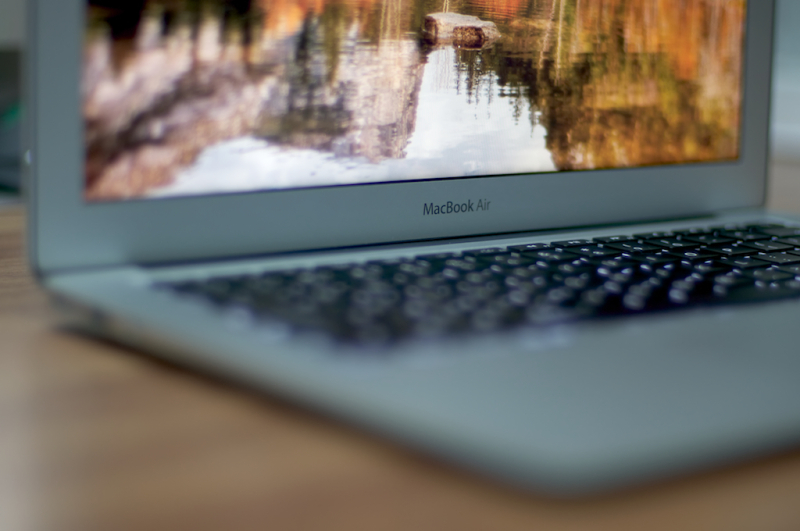
It’s been quite some time since I last reviewed a Mac — it was in 2010, when the 11” MacBook Air was introduced. By that time, the MacBook Air was the king of ultraportable notebooks. And two years later, despite the competition, it still is. Now we’ll take a look at the newest 2012 13” MacBook Air, introduced at the WWDC earlier this year.
First, I’ll tell you why I moved away from the 11” MacBook Air model. Although it was great, very portable, thin and light, the battery life wasn’t working well for me. The 13” MacBook Air is a bit larger and heavier (270g more), but the battery life is increased by about 40%, which in real world measurements, it’s a full work day for me.
13″ MacBook Air: The looks
Let’s start this review by the first thing you’ll see when you get yours: the packaging. It looks similar to the one in the previous MacBook Air I had, but now it’s all white. Package contents are the same as always: instructions booklet, power adapter and cord. And since it came with Mac OS X Lion installed, it doesn’t come with a restore disk: there is a restore partition in the SSD with the system image.
Although I never had to restore a Mac, except when I wiped it clean for sale, I’d prefer that Apple shipped it with an USB flash drive containing the system image, just like it did in the Mac OS X Snow Leopard days.
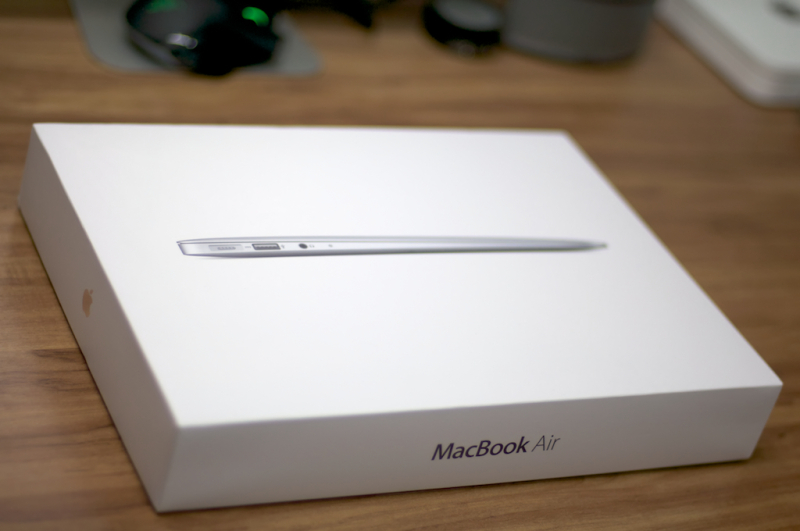
The 2012 13” MacBook Air box is nearly identical to the previous model.
Like the previous models, the 2012 13” MacBook Air is still extremely thin and light, and still surprises people when they see how thin the screen piece is. It makes many notebooks look like relics from a distant past.
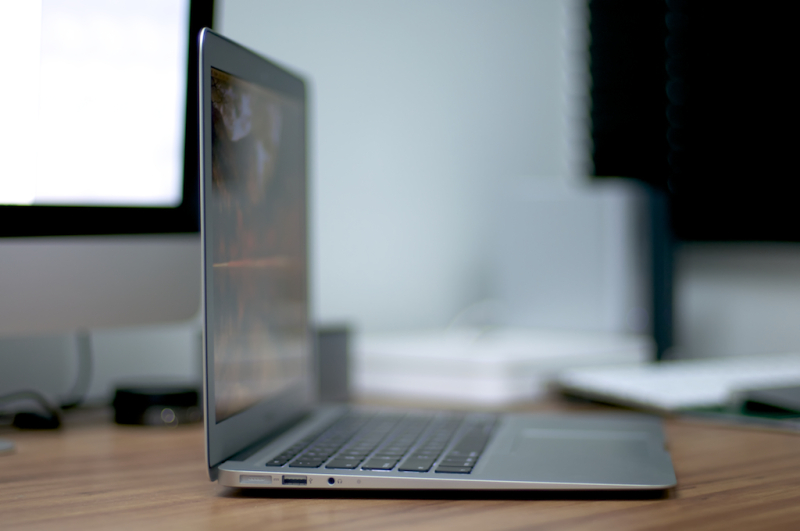
The 13” MacBook Air is still impressively thin.
It still weighs 2.96 pounds (1.35 kg), and it measures 0.69” (1.7 cm) at the thickest point (lid closed), like the mid-2011 model.
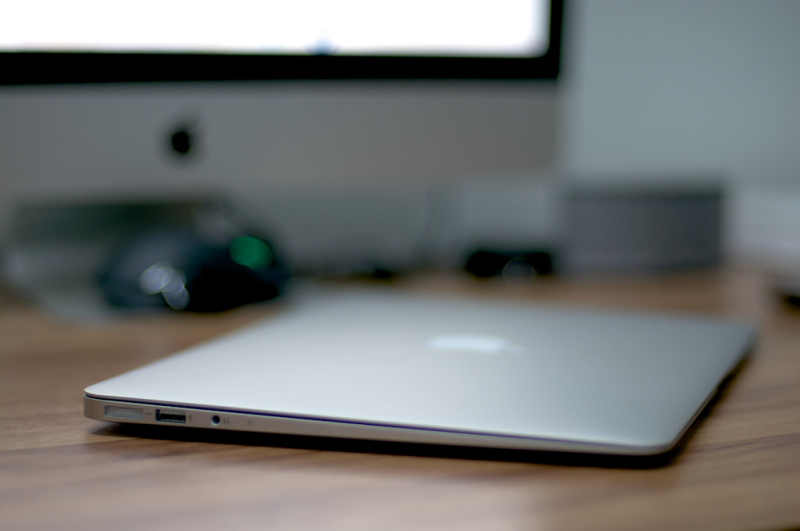
At the thickest point, it measures only 0.69”.
13″ MacBook Air: the hardware
The configuration I have here is the basic, entry level 2012 13” MacBook Air, so it features:
- 13” screen, with a resolution of 1440×900 pixels
- 1.8 GHz dual core Intel Core i5 (Ivy Bridge) processor
- 4GB of DDR3L RAM
- 128GB SSD
- Intel HD 4000 Graphics
- Thunderbolt port
- 2x USB 3.0 (USB 2.0 compatible) ports
- SD card reader
- Backlit keyboard
- Headphone jack, built-in microphone and 720p Facetime camera
- Mac OS X Lion
The 2012 13” MacBook Air can be configured, built-to-order, up to:
- 2.0 GHz dual core Intel Core i7 (Ivy Bridge) processor
- 8GB of DDR3L RAM
- 512GB SSD
Upgrading all the three parts will set you back 15” Retina Display MacBook Pro money, so I don’t advise you to do it. The only upgrade I really recommend is the $100 RAM upgrade to 8GB.
In my opinion, a notebook at this price point ($1199) should have 8GB of RAM as standard. Like all MacBook Air models, choose carefully, since the only thing you can upgrade later is the SSD (OWC has some upgrade options for the new MacBook Air already). In order to keep the board design compact, the RAM is soldered to the board.
For the purpose of this test, I updated it to Mac OS X Mountain Lion. I don’t think it makes any sense to review it using an outdated operating system.
Photographer’s note: the backlit keyboard is very useful in the dark (especially in airplanes) and produces great bokeh with a 50mm f/1.4 lens. 🙂
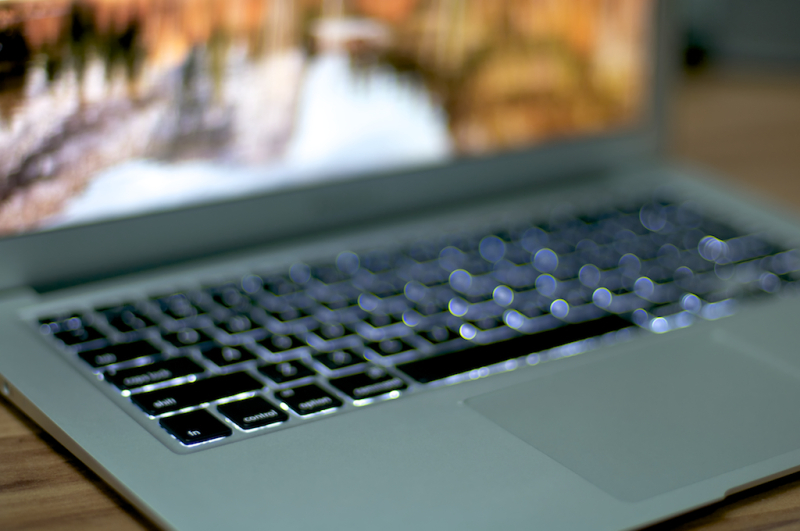
Backlit keyboard: one of the most underrated features of the MacBook Air.
The most interesting upgrades from the previous model are the new Intel Ivy Bridge processor and the addition of USB 3.0. Ivy Bridge is the newest generation of Intel’s processors and it has a very small thermal footprint (read: the notebook does not get hot).
After processing a few photos on Apple Aperture using the processor-intensive Nik Software plugins, the fan turned on, but the notebook wasn’t burning hot. This is something that wouldn’t happen in my previous 11” MacBook Air — that thing would always get very hot.
The processor is also very fast. Although I don’t do professional photo processing on the MacBook Air, it’s actually faster than my 2-year old iMac for processor-intensive tasks.
Its small amount of RAM does not compete with my workstation’s 16GB, though. For editing large photos or videos, the performance will take a hit because of the 4GB. In my typical work use (which is not anything demanding at all), I’ll have about 800 MB of free RAM. So this notebook would greatly benefit from having 8GB of RAM. The operating system (Mac OS X Mountain Lion) itself already has a large memory footprint.
The new USB 3.0 ports are a nice addition. There are already several peripherals in the market using USB 3.0 (many more than, let’s say, those using Thunderbolt), so it makes sense to bring those to the Mac.
I didn’t run a formal test using USB 3.0, but I could notice that the transfer speeds are very fast when connecting my 2TB Western Digital MyBook Essential disk to this notebook. The ports are also backward-compatible with USB 2.0, so you can plug any older devices on them and they’ll work just fine.
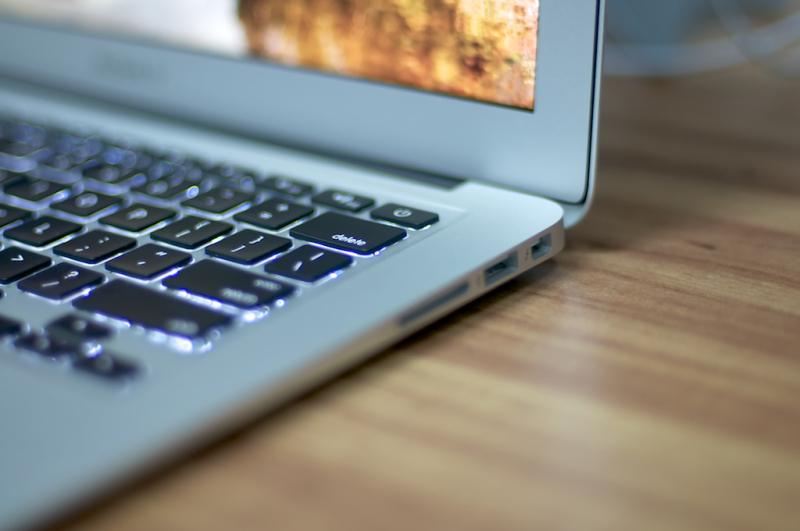
On the right side: SD card reader, USB 2.0/3.0 port and Thunderbolt port.
Most of my storage is at the cloud these days, so a 128GB SSD is more than enough. Some users will require a bit more, so they should go for the 256GB SSD model.
I think the 512GB SSD is a waste of money now. If you really need more than 256GB for your files, and don’t need ultra-fast accessing speeds, you should get a fast USB 3.0 external hard drive. It’s much cheaper than the 512GB SSD upgrade.
The keyboard is the same as always and it’s very comfortable to type on. It’s probably the best notebook keyboard out there these days. The multitouch trackpad continues to be the best in the market, with iPad-like response to the touch.
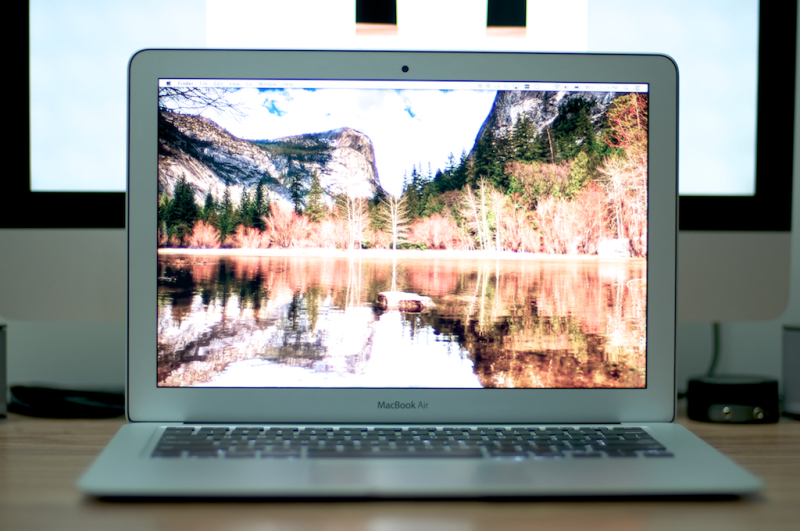
The trackpad and keyboard are still the same.
The power connector changed to the new MagSafe 2 standard. Although I like the new connector, it now makes me carry the power adapter wherever I go, since I can’t borrow one from any MacBook user anymore. Unless I decide to cough up 10 bucks for the adapter to the old MagSafe connector.
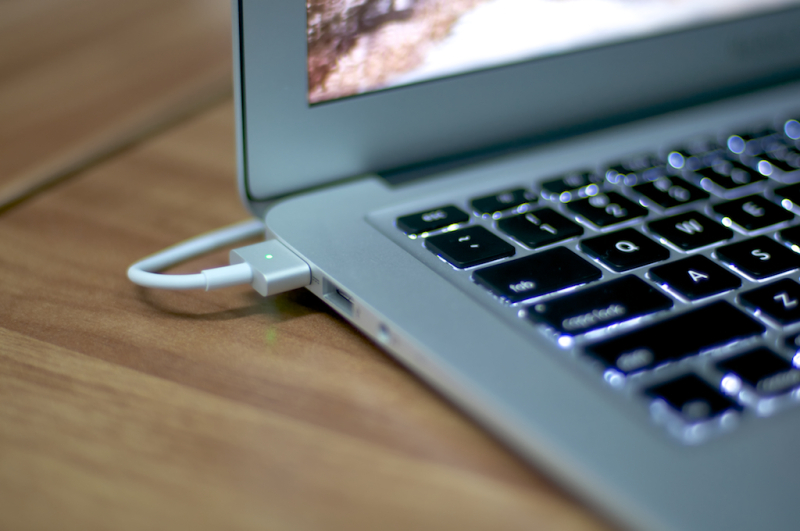
The new MagSafe 2 connector.
Speaking of energy, the battery life on this is very close to the advertised by Apple. In my typical work use, I ran out of juice after 6h on average, enough for my NYC-Boston train trips (on wifi).
Conclusions
So, just like the 11” model, the 13” MacBook Air is a great mobile workstation. It sacrifices size and weight for a greater battery life, and in my particular case, it’s worth it. For those who are considering the 13” MacBook Pro, one way to look at the MacBook Air is that this hardware is last year’s 13” MacBook Pro. If you don’t think this year’s MacBook Pro is more ‘Pro’ than the last year’s model, then I suggest you to get the MacBook Air. You’ll probably never look back.
Rating: 5.0/5.0